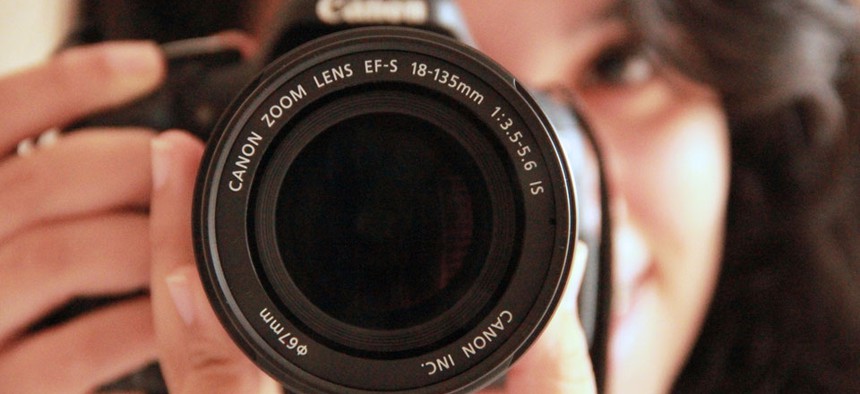Hey, YouTube, We Want to Sync Multiple Videos from the Same Event

Flickr user Kamilla Oliveira
And we could use metadata to turn disjointed footage into a single narrative.
When everyone has a camera with them at all times, people end up recording a lot of the same things simultaneously.
And once in a while these many recorders capture remarkable moments from different angles. Yet only rarely are these separate-but-similar shots woven together from disjointed devices into one narrative.
This is a missed opportunity, and it's the idea behind the Rashomon Project , which set out to create an open-source toolkit for assembling videos from multiple perspective in late 2011.
Now, after six months of working to turn their idea into a real-life demo, the project creators say they need a company like Vimeo or YouTube to pick up where they left off.
The Rashomon Project began after a high-profile incident at the University of California, Davis, that involved police officers pepper-spraying students as they sat on a sidewalk to protest tuition hikes at the school.
You remember this guy, right?

Videos of the incident—which show the officer pictured above spraying orange mist directly at students' faces—quickly went viral, and elicited outrage. Those individual videos were enough to prompt an international response.
But there's something doubly chilling about the Rashomon Project treatment , which includes eight separate videos and their accompanying audio. Hit play, and you watch the incident play out from eight angles at once, stereo-like audio playing together in a single track.
At the moment the police officer begins spraying, the crowd wails. People can be heard shouting, "no," and "what are you doing," repeatedly. Rashomon conveys a more pronounced sense of chaos and depth than any single video, and more closely approximates what it must have felt like to be there in person. Actually, it's what it must have felt like for eight different people who were there.
There's enormous potential value in capturing a controversial moment from many perspectives, not just because it gives people a more complete sense of what really happened but because it can change the way people think about filming, especially in chaotic environments.
Metadata like timestamps are a syncing tool but can also help verify standalone footage that can be otherwise edited in misleading ways. Goldberg says Amnesty International has indicated interest in multi-perspective video narratives for this reason.
"There's evidentiary value," said Ken Goldberg , a UC Berkeley professor who helps run the Rashomon Project. "It's much harder to fake. If someone selectively cut out a little section, that would show up because you'd see a gap."
Goldberg is hopeful that people will begin to think more strategically about multi-perspective narratives when they find themselves filming an event where others may be filming. "It's this sort of this SWAT-team-like coordination you have to do," he said.
With backing from the Knight Foundation's Prototype Fund , Rashomon hoped to turn its idea into a working tool and begin building a larger database of footage. Goldberg's team imagined reconstructing entire three-dimensional environments using a mesh of video clips, Google Street View, and satellite images, etc.
Rashomon is focused on empowering activists, especially in protest environments, but multi-perspective video syncing could come in handy in all kinds of scenarios.
"We're also thinking about natural disasters," Goldberg told me. "A major earthquake, when hundreds of thousands of videos are shot right around the time. What if we organized all of those temporally so you could how the earthquake is progressing at different areas?"
Imagine the narrative you might get if you collected and combined snippets of video captured in different places as people captured the same tornado tearing through a town.
Goldberg's team, which is still manually synching videos, quickly realized they didn't have the resources to automate syncing or host the kind of multi-perspective video operation they believe is needed. He said it's impossible to compete with organizations like YouTube, Facebook, and Vimeo, but he's hopeful those companies might see the value in Rashomon's work and decide to build something similar.
"We're still really excited about this," he said.


